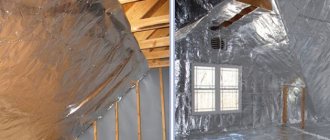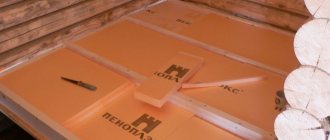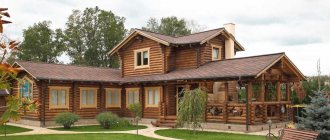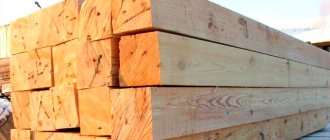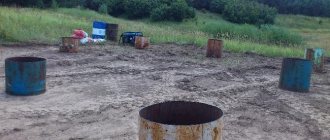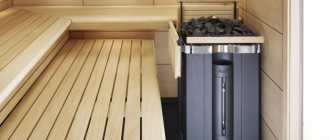In the summer, you really want to feel like children again: eat ice cream, walk a lot and swim a lot. Cool water restores vigor and clarity of mind, helping to refresh on a hot day. That’s why we always try to go to the sea, lake, river, or any nearby body of water. What if you don’t wait for a vacation, but organize such a pond right at your dacha? Read this article if you are planning to buy a pool or have already done so.
Difference in design and more
If you are not going to build a stationary structure, install a concrete bowl and build a large deep pool on your site, but you love water treatments, then you have probably thought about buying a small mobile pool for your dacha. Two types of ponds compete for the attention of buyers - inflatable and frame. The former boast lightness and mobility, the latter – strength and depth.
The body of a large inflatable pool is a soft bowl with an inflatable side. As the pool fills, the side inflated with air rises, straightening the walls, and the bowl takes shape. A frame pool is built according to a different principle: first, a “skeleton” is built from light tubes, onto which a durable film bag of a given shape is attached. That is, even without water, it holds its shape due to the frame. Hence the name.
Features of the frame model
The frame type pool is a prefabricated structure. It consists of a set of metal pipes and frames. After assembly, a bowl made of 3-layer extra-strong PVC film is placed inside it. Based on the type of technology used, tanks of the type in question are divided into two categories:
- Leafy. The design is a set of modules made of plastic or metal, inside which a thicket is placed.
- Rod. The structure consists of strong crossbars.
Reservoir of a rod structure Source akvastroym.ru
Based on seasonal use, they are divided into three types:
- Collapsible or seasonal use. Such models are installed with the arrival of warm weather, and dismantled with the onset of cold weather.
- Frost-resistant or all-season. Externally, they practically do not differ from the analogues described above, however, they have a more durable reinforced structure of the bowl material, and therefore can be left for the winter.
- Stationary. According to the main parameters, such a frame pool is better than those given above - a more rigid and durable structure, a greater variety of sizes, and a service life of at least 12-15 years. However, once installed, such tanks cannot be moved to another location, and in terms of costs they are comparable to their concrete counterparts.
Advantages of a frame pool:
- Cheaper than a stationary one.
- Frost resistance.
- Availability of choice by size.
- Classic geometry for the best landscape design.
- If necessary, you can choose a model that is sufficient in depth and space.
- Good strength.
- Optimal ratio of cost and functionality.
Private swimming pool with protective pavilion Source ivd.ru
Which pool is better - frame or inflatable?
When choosing a pool for a summer house or country house, you should consider several important factors. Inflatable pools are suitable for small areas and, as a rule, are purchased for children's recreation. Frame models are stronger and more durable - they are taken for adults and teenagers.
Here are a few factors to help you make your choice.
- Number and age of users.
It is better for small children to buy inflatable pools: they are safer. Teenagers and adults, as well as large groups, should choose frame ones: they can provide the necessary depth and area for comfortable relaxation. - Frequency of use.
If you usually spend the whole summer at your dacha, and there is no body of water nearby, then it makes sense to install a frame pool. It is strong, durable, suitable for frequent use, there are even frost-resistant models that will survive the winter without any problems and will again delight their owners the next season. - Land area.
How much space are you willing to allocate for a swimming pool? If you need to fit it between beds and greenhouses, give preference to an inflatable one. If necessary, it is easier to move it or remove it completely. If the area allows, take a large frame model. - Price.
The purchase price is also important in your decision. The price of an inflatable pool is, of course, lower than a frame one. That’s why it’s easier for many people to decide to buy it. But if you roughly calculate the frequency of use and the need to regularly replace an inflatable pool, then the cost of a frame pool will no longer seem so exorbitant.
Let's take a closer look at the advantages and disadvantages of each type of pool.
When will the inflatable one fit?
Those who rarely go to the countryside, prefer to travel more, choose inflatable models, especially since they are optimal for small children.
They are lightweight and install in 20–25 minutes. After rest, it can be easily folded and transported to another place . It is easier to care for an inflatable tank, and when folded it takes up virtually no free space.
If we take into account the price, then blown ones are several times cheaper than frame ones, but the latter are stronger and more durable.
Frame pool: pros and cons
Practicality comes first on the list of advantages of a frame pool. Wear-resistant materials can last for many years without losing their properties, and all-season structures are not afraid of even frost. So, having assembled such a pool on your site once, you can safely leave it there for several years.
Pools on a frame are easy to assemble and easy to install yourself. The structure is very stable and strong, and if necessary, it can even be deepened into the ground - about 1/3 of the height of the side. The classic shape (rectangle or circle) will easily fit into any landscape.
Another important advantage: such pools are suitable for adults; in large models a whole group can relax at the same time. Depending on the type, the pool may be equipped with additional equipment: a water filtration and purification system, stairs, waterfalls, canopies and even small slides.
The disadvantages of frame pools are visible primarily when compared with stationary ones. These are, for example, the need to dismantle the structure at the end of the season (if you do not have a frost-resistant model), insufficiently strong and rigid sides that cannot be pushed off when swimming, and modest dimensions. It may also be difficult to install additional equipment - a waterfall, lighting and other elements.
| Frame pool | |
| pros | Minuses |
|
|
What to buy for a private home?
A frame pool is a stationary structure designed for constant use in a selected location.
Once you assemble it and that’s it, it can stand all summer and winter (all-season model).
Typically, frames are simpler in terms of water purification - additional equipment in the form of filters is easily connected to them. If you need a permanent resting point, install a stationary frame model.
For a small child, you can choose a small “paddling pool”, costing up to 5,000 rubles, which does not have to be filled to the brim with water.
Inflatable pool: pros and cons
Inflatable pools are also a popular option for a permanent pond for a summer residence. Their main advantage is lightness and compactness. Moreover, this is true for a variety of models - from a tiny “paddling pool” for one child to a full-fledged large pool with a depth of 1 meter or more. The inflatable pool is as easy as possible to install. It doesn't take much time or effort to inflate it.
Thanks to modern technology, inflatable pools are quite durable. Of course, they are inferior in this parameter to frame ones, but nevertheless they also have several layers and can withstand decent loads.
The range of such pools is colossal. There are very miniature models where kids can splash. Such pools are often equipped with a special inflatable sun awning, which is very convenient. There are also options for adults: those that you need to climb into using a special ladder. Of course, you won’t be able to organize swims in them, but it’s easy to freshen up on a hot day or cool down after a bath.
The main disadvantage of inflatable pools is their fragility. On average, the service life of such a reservoir is 2-3 seasons, depending on the weather and activity of use. The sun's rays heat the walls and adversely affect the material: it loses elasticity and strength. Some models also have difficulties draining water: not all of them are equipped with a convenient drain hole. In such a pool it is difficult to organize water filtration, which means there is a risk of algae and blooms.
| Inflatable pool | |
| pros | Minuses |
|
|
Customer Reviews
Most buyers of frame pools, who left their reviews on manufacturers’ websites and specialized forms, note the aesthetics of the design, versatility (suitable for the whole family), strength and durability. Also, many are attracted by winter hardiness and the absence of the need for dismantling for the winter.
As for filters, all large and well-known manufacturers come with them included, so the client does not have to select additional components on his own. Today there are many models on the market that differ not only in size, but also in price. So, if you wish, you can find both a premium pool and a completely budget option.
Inflatable pools are most often purchased for children. Judging by customer reviews, they are attracted by affordable prices and a large selection of colors and sizes. Small models can even be taken on the road. However, everyone unanimously admits that this is a short-term option that will last no more than 2-3 seasons.
Inflatable pool for children: how to choose the right one
The main users of inflatable pools are, of course, kids. Splash on a hot day, have a water battle, give all the dolls a bath, or organize a natural sea battle - summer games with water are loved by children of all ages. And in the hot, dry summer, a children's inflatable pool also saves the baby from overheating and stuffiness. That is why the demand for them is steadily growing before each summer season.
Large and small, colored and plain, with slides and canopies, classic shapes or in the form of playgrounds - there are so many inflatable pools you won’t find on sale today. However, when choosing them, you should focus not only on the child’s wishes and price, but also on safety issues. First of all, to the depth of the product.
Pool depth according to the child’s age:
- up to 1.5 years – up to 17 cm (mini-pool);
- from 1.5 to 3 years – up to 50 cm;
- from 3 to 7 years – up to 70 cm.
Important: regardless of age, the depth of the children's pool should not exceed the height of the child.
Also make sure that the pool has several cameras so that if one of them is damaged, it will not burst like a balloon and scare the baby. Remember that it is important to protect your child from the sun's rays: it is good if the pool is equipped with a special protective canopy from the sun.
Varieties
On private property, you can install three main types of pools - frame, inflatable or stationary - which one is better, the consumer must decide for himself, based on personal preferences, capabilities and conditions. In addition, the tank can be located either in the open air, under a canopy, or in a special pavilion. In the latter case, it is possible to significantly increase the period of seasonal operation - when installing a heating and water heating system.
Frame pool in the courtyard of a private house Source goodpools.ru
The most common options have the following features:
- Inflatables are characterized by minimal cost and maximum popularity among summer residents. Installed exclusively on a flat surface.
- Frame - characterized by a rigid frame, assembled from individual elements like a construction set. They can be mounted both on the surface and in a specially prepared pit.
- Plastic bowls are made using frame or monolithic technology. The latter are characterized by sufficient strength, reliability and durability.
- Concrete is the most durable and reliable, but at the same time the most expensive, time-consuming and labor-intensive. For normal operation, installation of a professional cleaning system is required.
Bowl of a concrete pool under construction Source ashazh.rf
Note! There is another important parameter that allows you to choose the right frame pool: the shape of the bowl. It can be round, oval, square, rectangular or other geometry - at the discretion of the user. However, during installation, it is necessary that the substrate matches these features of the tank, and it does not turn out that some part of it is simply hanging in the air and does not have sufficient support for the base.
See also: Catalog of companies that specialize in swimming pools and equipment
Checking the pool equipment
Each model of a country pool may contain a different set of additional funds, or not contain them at all. We will look at the most popular ones. Even if they are not included with your pool, think about it - perhaps they will be useful to you.
- Instructions.
This is perhaps the only thing that is guaranteed to be included in every package of a brand new pool, regardless of the model. - Litter.
A large piece of material (usually polyethylene) that is placed under the bottom of the pool to protect it from direct contact with the ground. Without it, the bottom may begin to rot, become moldy and wear out faster. If a special bedding is not provided, it can be replaced with ordinary thick film from a hardware store or a tarpaulin. - Tent.
A relevant item for large pools that will last all summer. It is stretched over the sides when the pool is not in use. Thanks to the awning, leaves from trees, insects and other street debris do not fall into the water. In addition, under the awning the water takes longer to cool down. The simplest models are a piece of canvas fabric the size of the pool, equipped with a tightening belt or other fastening elements. Complex awnings can look like full-fledged canopies, domes or even gazebos - they will protect not only the pool itself, but also swimmers (for example, from the hot sun). - Pumps and filtration devices
are also often included with large pools. They may vary in power and durability. Often the basic kit includes inexpensive simple models that you can replace with more powerful ones. - Gorki.
These water activities are usually very light and portable. Most often there are small inflatable slides that are suitable for children. However, adults can also find suitable plastic slides for themselves. The main thing is to make sure that the capacity and strength of your pool allows them to be used, and that the walls can withstand the impact of water and wave vibrations. - Stairs.
Another important element for large pools. With the help of a ladder you can carefully enter and exit the water. Give preference to metal structures: they are more reliable than plastic ones.
The best hard pools
A rigid structure means a product with thick and dense walls. In this way it is similar to plastic models. But this option cannot be dug into the ground and left outside for the winter. As a rule, it is sold whole and does not require assembly. Of the 5 products analyzed, only one with good performance characteristics was added to this review category.
Azuro 400DL
The Azuro 400DL pool belongs to the mid-price segment. It can either be installed separately on the ground or dug into a hole. It does not have to be hidden for the winter due to the frost resistance of the materials. Dimensions of 3.6 x 3.6 m allow you to feel comfortable while bathing 2-3 people at the same time. The depth of the bowl is 107 cm; of course, you can’t dive here, but you can cool off in the heat.
The plastic in-ground pool is made in the shape of a circle and looks harmonious in small areas. Wood paneling allows it to fit into both modern and classic landscape designs. The blue marble film reflects the sun's rays and promotes rapid heating of water. The 0.4mm wall thickness makes it look neat while still withstanding user loads and fluid pressure.
Advantages
- Installation within 1-2 hours;
- The color of the film can be changed if desired;
- The set includes an extension ladder;
- The coating is not scratched;
- Volume – 11 cubic meters.
Flaws
- The package weighs 71 kg.
Reviews say that this model can be dug into the ground even on not very level areas. This will only affect the visual perception of the bowl.
How long does it take to install a swimming pool yourself?
It is not difficult to install a swimming pool on your property yourself. Each product comes with detailed instructions - whether it is an inflatable pool or a frame one. Be sure to follow the sequence of actions indicated in it. Assembly time depends on how large the tank you want to install. Small inflatable pools can be inflated with air in a matter of minutes; frame models are installed on average from 15 to 30 minutes.
To install a pool, you must first prepare a flat area without changes in height, bumps or holes. This is important so that the load is evenly distributed over the entire frame or inflated walls.
For each type of artificial reservoir there are small nuances, let’s look at them in more detail.
How to install an inflatable pool:
- Check the site where you plan to install. It should not only be level, but also free of sharp branches, stones, cones and other elements that could damage the pool.
- To protect the bottom of the pool from punctures and damage, spread a tarpaulin or special film over the installation site.
- Consider in advance a place to drain the water, depending on the volume of the pool.
- Read the instructions, straighten the product and inflate all its parts in the correct order. Securely fasten the closing elements by “sinking” them into the soft side.
How to install a frame pool:
- On a pre-prepared flat area, lay cellophane the same size as the bottom of the future pool.
- Assemble the frame from metal tubes as indicated in the instructions, secure the vertical crossbars - the future walls.
- Check whether the structure is smooth and finally secure all the elements.
- Using special fittings, secure the film to the frame.
- The final step is to connect the pump to filter the water.
What to consider when choosing a pool for your summer cottage. Photo examples of private reservoirs
Before deciding which pool is best for your dacha, you need to pay attention to several factors:
- availability of free territory for installing a swimming pool at the dacha - models offered by many manufacturers can have different dimensions and depths;
- intensity of use - if you visit the dacha from time to time, then there is no point in installing a large pool that takes a long time to assemble and disassemble;
An inflatable pool is perfect for a child who cannot swim
- the purpose of the reservoir - the choice of pool is influenced by whether it will be used by adults or children;
- capacity - if your family is large, it makes sense to purchase a model in which several people can swim at the same time;
- availability of water supply - if your holiday village has problems with water supply, then maintaining and maintaining the pool will be quite difficult. In addition, choosing a design with a large load implies the need to fill or drain a significant amount of water in one go;
- power supply - is it possible to supply electricity to the installation site to connect filtration equipment;
- financial possibilities - the prices for outdoor pools for a summer residence are quite affordable, but more advanced and voluminous designs will cost more.
A reliable inflatable pool for a good time with friends
Companies that sell swimming pools for private use offer many types and models of artificial ponds. These include stationary, prefabricated frame and inflatable structures. To build a stationary pool you will need a lot of financial investments, but purchasing and installing a frame or inflatable pool at your dacha is affordable for any summer resident.
What should be the temperature of the water in the pool at the dacha?
While adults can determine for themselves whether the water in the pool is comfortable for them and get out if they get cold, this doesn’t work with kids who love to splash around. Therefore, you need to monitor first of all the temperature of the water in which children bathe.
The water temperature in the pool is considered comfortable from +24 to +26 degrees. For kids, even a couple of degrees higher – up to +28 °C. Under such conditions, you don’t have to worry about the child, but it’s still worth periodically checking the temperature of the nose and ears and taking breaks in water procedures. The minimum permissible temperature for comfortable and safe swimming is +22 °C. At the same time, the smallest ones can be kept in such water for only a couple of minutes to prevent hypothermia.
What are the consequences of non-compliance with the temperature regime? Of course, many children are ready to swim in water from +17 °C to +19 °C, as they say, “up to their blue lips,” but this can lead to hypothermia, convulsions and even loss of consciousness. However, water “like fresh milk” is also not healthy. When heated above +28 °C, microorganisms and algae begin to actively multiply in the pool. And both on the walls and in the water. As a result, we get slimy walls, cloudy blooming water, a dirty pool, dangerous bacteria and fungi in direct contact with swimmers. If they enter the mouth or mucous membranes, they can cause poisoning and serious illness.
How to quickly heat water in an outdoor pool
If we are talking about a large pool, in which it is important to maintain a constant comfortable water temperature, then usually special electric heaters or heat exchangers powered by a gas water heater or heating station are used for these purposes. And in order to increase the water temperature in a small country pool by several degrees, an ordinary kettle will do. Just boil water in it and add it to the pool. On a sunny day, the water in a small outdoor tank will quickly heat up on its own.
Possibility to leave for the winter
Not everyone wants to clean their pool for the winter. It’s not that difficult, but... Among the inflatables there are no “winter” models, but there are frame ones that are frost-resistant—Canadian ones. You can safely leave them, and even in the most severe frosts nothing will happen to them. The downside is their high price - about twice as expensive as a similar “Chinese” product of good quality (Intex, for example).
But it’s not only Canadians who winter outside normally - many companies have in-ground models of frame pools (depth more than 1.5 meters) made of frost-resistant material. So if you want, you can find it. Only in winter, to compensate for the expansion of ice, half-submerged plastic bottles and eggplants are thrown into the water. They take on most of the load.
Frame pools can be wintered outdoors with water
Based on operating experience: some people leave their “Inteks” (frame) to winter for several years in a row and nothing happens to them.
“For three years now I haven’t drained the frame for the winter. So far the flight is normal. It stands near my bathhouse, so in the winter I use a saw to make an ice hole in it, and after the steam room I take a dip.”
“This is the second winter I haven’t cleaned my pool: I have problems delivering water to the site. I covered the top with a blanket and that was it. In the spring, I removed all the turbidity with a pump, ran the water through a filter with tablets, and the water was clean.”
Only frame pools can winter outside, so from this point of view they are better than inflatable ones.
Why does the water in a country pool bloom and how to avoid it?
To prevent the water in the pool from turning green and to remain clean and safe for swimming, it is necessary to use a filtration system or completely change the water. The second method is usually used for small inflatable pools, where draining water and adding new water is easier than organizing a filter system.
To prevent the active proliferation of microorganisms and the formation of mucus on the walls of the pool, it is important to think through a water disinfection system in advance. For those who plan to use the pool for a long time and have a tank with a capacity of 500 liters or more, it is better to use automatic disinfection stations and ultraviolet sterilizers. In small pools, special chemicals that are dissolved by hand will do the job perfectly. They will also help out in cases where you plan to use an artificial reservoir for a short time. Remember that the likelihood of water blooming increases in the heat, so try to monitor the pool and water quality.
Editor's Choice
Bestway Power Steel 56721
Bestway Power Steel 56721. Photo: yandex.market.ru
With the Power Steel 56721 frame pool from Bestway, a company specializing in the production of leisure goods, any summer heat will be nothing, because in order to cool off and swim, its owners will not have to walk far.
Installation and assembly of the pool is simple and does not take much time. Its frame has increased strength - the corners are additionally reinforced with special connecting elements. And to prevent rust, all parts are treated with a special coating.
The pool bowl is also highly reliable due to the material from which it is made - three-layer reinforced polyvinyl chloride.
A distinctive feature of the pool is a built-in water chlorination dispenser, which will allow owners not to worry about protecting the water from various pathogens and microorganisms. In addition, the kit additionally includes a cartridge filter pump, which will also provide protection against contamination.
Characteristics
| Pool type | frame |
| Size, LxW | 404x201 cm |
| Depth | 100 cm |
| Volume | 6478 l |
| Included | ladder, water pump, cartridge filter |
| Package weight | 61.80 kg |
Advantages and disadvantages
Equipped with a disinfection system, frame strength
Not too deep
show more
How to properly clean a country pool
Even if you install a filter in your country pool, this does not guarantee that the water will always be crystal clear. Leaves from trees, small twigs, insects, etc. can get into it.
For large debris floating on the surface, you can use a regular net. And small things are effectively collected by a skimmer - a special device that draws in the top layer of water, leaves everything unnecessary in a special tank, and returns clean water back to the pool. Often the device is included when purchasing a pool.
To tidy up the walls and bottom of a pond, there are special vacuum cleaners: they can be powered by electricity or batteries. For large stationary models, robotic vacuum cleaners are used that independently crawl along the bottom and carry out cleaning.
Safety rules for swimming in the pool
It is important for both children and adults to remember that the pool is not a harmless toy. In addition to joy, it also carries a certain danger. In the pool you can slip, get bruised or sprained, and if you swim carelessly, you can even choke. A long stay in cold water is fraught with convulsions, and being in a pond in the heat without protection from the sun can lead to heatstroke or burns. To avoid trouble, it is important to remember the basic safety rules, and in the case of children, it would be useful to briefly repeat them before each bath.
- Children should only swim in the pool under adult supervision.
This rule applies primarily to children under 2 years of age, for whom even a small toy “paddling pool” poses a danger. A child may slip, end up face-first in the water and not figure out how to get out of the slippery pool. If we are talking about deep pools, then even swimming children of school age should only take place in the presence of adults.
- Safety first:
the pool should have a canopy from the sun or natural shade from trees, the possibility of safe entry and exit (ladders for deep tanks), the drainage system should not be too powerful so as not to entangle the baby. And once again an important rule: the depth of the pool should not exceed the height of the child.
- In hot weather, do not forget to wear a protective hat when bathing your baby.
On a clear day, it would be a good idea to use children's sun protection products. The delicate thin skin of a child is exposed to ultraviolet radiation much faster. In addition, droplets on wet skin act as microlenses, increasing the likelihood of a burn. Adults who spend long periods in the sun are also advised to use protective equipment.
- Watch your bath time.
In hot weather, it is better not to be in the sun between 12:00 and 15:00 to avoid heat stroke. Also, agree in advance with the children how much time they spend in the water, and how much time they then play on the “shore” before the next entry. Monitor the temperature of the child's ears and nose, and the color of his lips.
- Explain the rules of safe play.
It is important for older children to understand the rules of water safety: – you cannot push, dive or tumble; – you cannot jokingly portray a drowning person and call for help (this way you may not wait for real help if you really need it); – you cannot “drown” and hold other swimmers under water, even as a joke, even at their request.
- Use inflatable accessories.
In a large pool, you can learn to swim using arm sleeves, a vest or a swimming circle, or lie on an air mattress in the center of the pond. The main thing is not to indulge and do not forget about sun protection.
- Close access to the pool after use.
The small one can be dried and turned over so that it does not collect dirt and dust. A large pool should be covered with a special awning so that children or animals are not tempted to splash around. The awning will also protect the water from debris and dust.
Let your summer holiday be pleasant and carefree!



